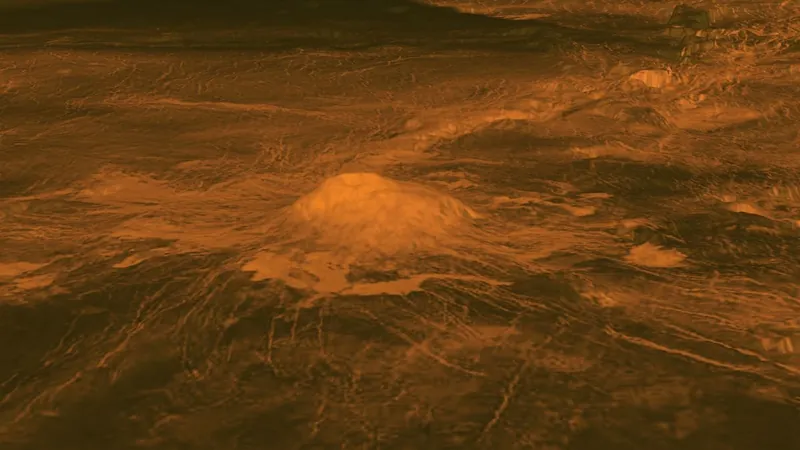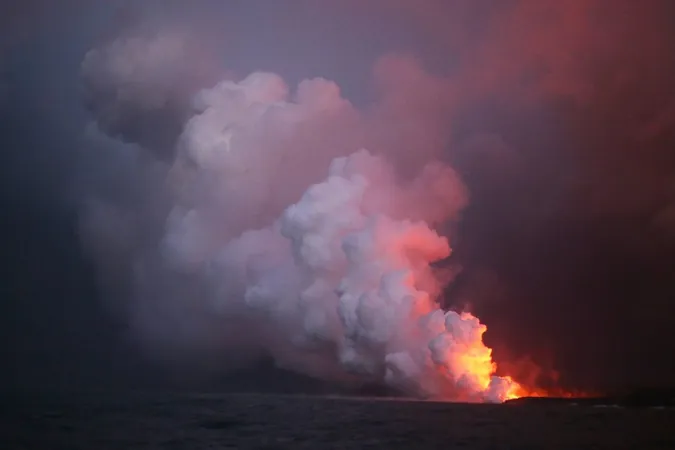
Scientists Uncover Venus' Volcanic Secrets: Convection Might be the Key!
2025-04-04
Author: Jessica Wong
Introduction
A groundbreaking new study reveals that convection processes beneath Venus' searing surface may provide vital insights into the planet's multitude of volcanoes. Known as the hottest planet in our solar system, Venus boasts an astounding estimated total of 85,000 volcanoes, a figure derived from radar imagery captured during NASA's 1989 Magellan mission.
The Theory of Convection
Researchers have recently proposed an intriguing theory regarding the source of this extensive volcanic activity: they suggest that convection within Venus' crust plays a crucial role. Utilizing innovative fluid dynamic modeling, scientists demonstrated that the planet's crust could indeed support convection currents. This process would enable heat from the interior of Venus to be transported to the surface, where temperatures soar to a scorching 870 degrees Fahrenheit (466 degrees Celsius). The high temperatures contribute to the observable melting and geological activity indicative of hyperactive volcanoes.
Insights from Experts
Lead author of the study, Slava Solomatov, a professor of Earth, Environmental, and Planetary Sciences at Washington University in St. Louis, stated, "Nobody had really considered the possibility of convection in the crust of Venus before. Our calculations suggest that convection is not only possible but perhaps likely. If true, it gives us new insight into the evolution of the planet."
Convection on Other Celestial Bodies
Convection is a fundamental process where heated materials rise while cooler ones sink. On Earth, such convection currents in the mantle beneath the crust drive the movement of tectonic plates, leading to volcanic activity and other geological phenomena. Interestingly, similar processes have been identified on Pluto, where NASA's New Horizons mission observed surface features resembling tectonic plates, hinting at convection at work in its icy layers.
Implications for Venus' Volcanism
On Venus, scientists now believe that convection may occur primarily in the planet's thin outer crust, rather than deeper layers. This mode of heat transfer could explain the melting observed on the surface and provide new perspectives on the distribution and type of volcanoes across the planet's landscape.
Looking Ahead
"This convection in the crust could be a key missing mechanism," emphasized Solomatov, highlighting its potential significance in unraveling the mysteries surrounding Venus' volcanic activity. Looking ahead, researchers aim to combine mathematical modeling with observational data from Venus to deepen our understanding of the planet's geology. A future mission to Venus may even allow for high-resolution gravity measurements, enabling scientists to analyze density and temperature variations within the crust and verify the existence of these convection processes.
Conclusion
As we continue to explore Venus, the revelations from this study promise to have far-reaching implications, not only for our comprehension of our planetary neighbor but also for our broader understanding of planetary geology throughout the solar system. Stay tuned, as more exciting discoveries could revolutionize what we know about the fiery and enigmatic Venus!






 Brasil (PT)
Brasil (PT)
 Canada (EN)
Canada (EN)
 Chile (ES)
Chile (ES)
 Česko (CS)
Česko (CS)
 대한민국 (KO)
대한민국 (KO)
 España (ES)
España (ES)
 France (FR)
France (FR)
 Hong Kong (EN)
Hong Kong (EN)
 Italia (IT)
Italia (IT)
 日本 (JA)
日本 (JA)
 Magyarország (HU)
Magyarország (HU)
 Norge (NO)
Norge (NO)
 Polska (PL)
Polska (PL)
 Schweiz (DE)
Schweiz (DE)
 Singapore (EN)
Singapore (EN)
 Sverige (SV)
Sverige (SV)
 Suomi (FI)
Suomi (FI)
 Türkiye (TR)
Türkiye (TR)
 الإمارات العربية المتحدة (AR)
الإمارات العربية المتحدة (AR)